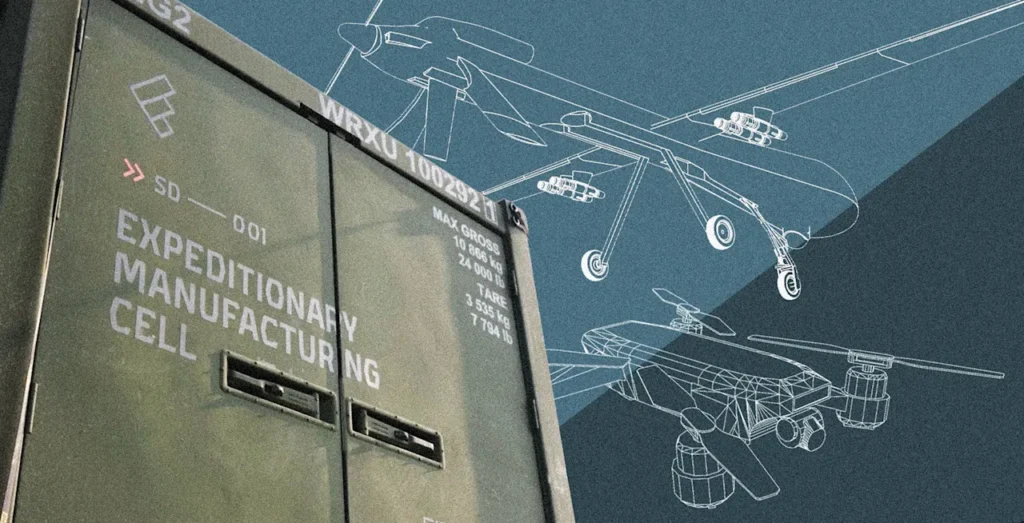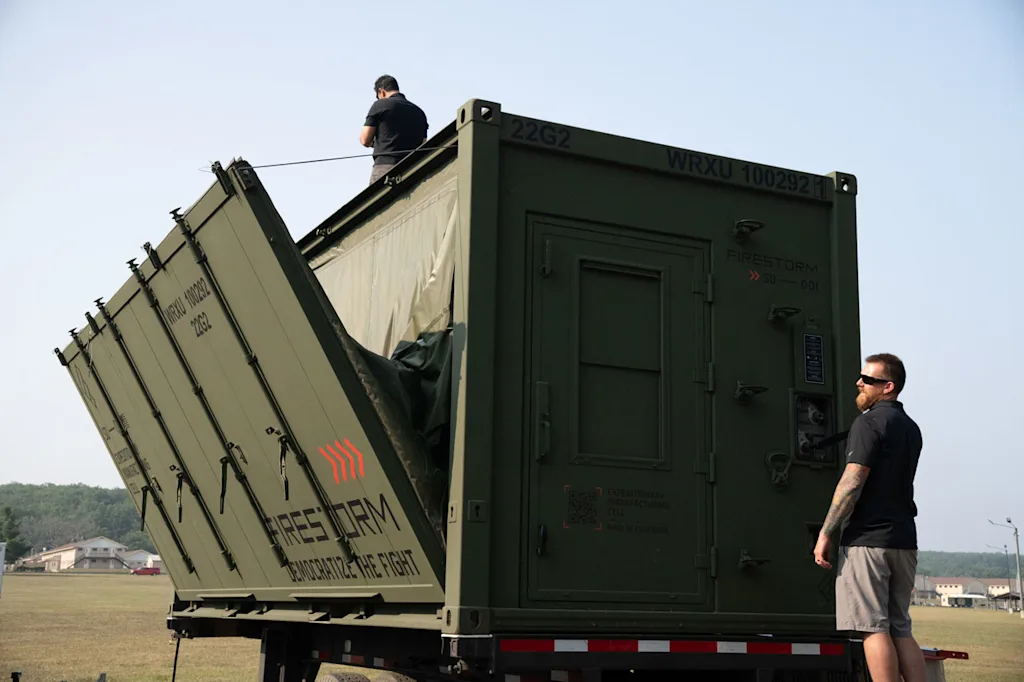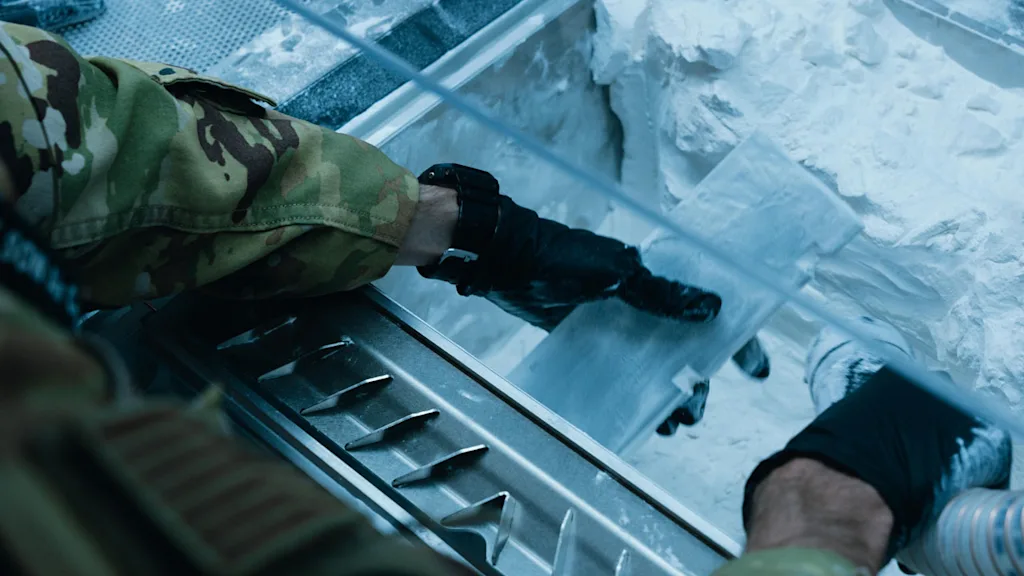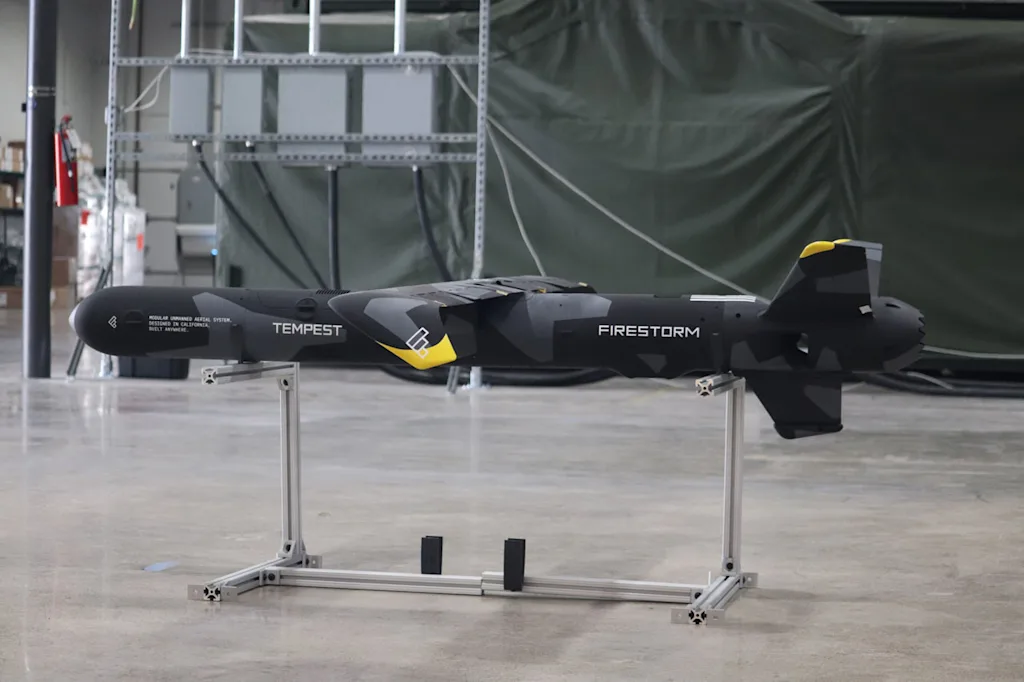
For U.S. soldiers who find themselves at the front lines of a future conflict, it’s fast becoming gospel, due to the way warfare is rapidly evolving on the battlefields of Ukraine, that drones will be crucial to winning (or losing) the fight
But the roughly 500 U.S. dronemakers can only build about 100,000 a year combined, according to Ryan Carver, communications manager for the Association for Uncrewed Vehicle Systems International. For comparison: One Chinese firm, DJI, can pump out millions of unmanned aerial vehicles (UAVs) a year — 70% of the global supply.
To ameliorate this challenge/problem, a number of startups believe 3D printing, specifically of drones, can help deploy new tech more quickly in the field.
And the military is interested.
Firestorm Labs, a San Diego-based startup building industrial 3D-printing solutions for the military, envisions those soldiers not just flying drones, but manufacturing them near the battlefield. The firm’s xCell expeditionary manufacturing system fits drone production within a 20-foot-long shipping container. Inside, customized HP industrial 3D printers can spin a six-foot-long drone body out of nine cubic inches of Nylon 12 powder in about 14 hours.
“Industrial 3D printing allows us to leapfrog a lot of the problems we have today,” Firestorm CEO Dan Magy says. “You can solve part of the drone manufacturing gap with new ways to build drones that don’t require them to be exquisite.”
A number of startups like Firestorm hold up 3D printing, specifically of drones, as a means to not necessarily fully catch up to a rival, but to more quickly deploy new tech in the field. And the military is interested. In June, the Air Force awarded Firestorm a $100 million contract to make additively manufactured UAVs.

Numerous groups within the military have already been experimenting and training with 3D printing and drones. The tech has become more established in the defense world as a means for replacing parts, especially at remote bases or at sea — Snowbird Technologies out of Jacksonville, Florida, makes 3D-printing systems for naval ships so they can replace parts without having to return to port. Now it’s being piloted as a means to churn out UAVs.

It fits within the goals of the new administration, which includes an aggressive push toward drone warfare. In a memo this past July, Secretary of Defense Pete Hegseth ordered the military to “bolster the nascent U.S. drone manufacturing base” in part by focusing on low-cost drones. The army is launching a drone marketplace so different units can quickly try and test models. The U.S. military also just started SkyFoundry, a pilot program to ramp up production of small drones via innovative manufacturing methods, aiming for at least 10,000 a month.
At Fort Campbell in Kentucky, soldiers in the 101st Airborne have been experimenting and training with EagleMav 3D-printed drones and the ABE 1.01, which is made via computer-controlled milling machines, says Major Jonathon Bless, the unit’s deputy director of public affairs. As part of an effort called “transformation in contact,” where soldiers are building their own drones on base using commercial parts, the 101st has put hundreds of drones through their paces.

“This is a bit of a cultural shift in the Army,” Bless says. “Previously, drones have been looked at as expensive reconnaissance equipment with fancy cameras. You don’t want to lose one. These have been purposely designed at a low dollar value so we can start looking at them as lethal, kamikaze drones.”
Advocates for additive manufacturing have championed the tech as a nimble way to build outside of the highly regulated, risk-averse supply chains of traditional defense contracting, and as a mobile means of custom production.
The Ukrainian army offers a real-time case study. Tali Rosman, an analyst with RHH Advisory, says a significant number of the nation’s drones are 3D printed. On the front lines, if certain munitions or parts run out, additive manufacturing can spin up relatively instantaneous solutions to adapt and deploy deadly drones. Since they’re likely only flying a handful of times before they’re destroyed, cost and speed are paramount.
“[3D printing] technology is getting faster, better, and taken seriously for the first time,” says Ben Wynne, CEO of Intrepid Automation and an additive manufacturing expert. “We’ve reached this kind of perfect point where if people want to make simple quadcopter frames and iterate the design, they can scale up to hundreds or thousands rather quickly.”
Magy, who believes Firestorm can get its printing time down to under 4 hours, believes it’s a production race the nation needs to win.
“Everyone’s starting to build their own drone army,” he says. “We’re going to solve that for the U.S.”
